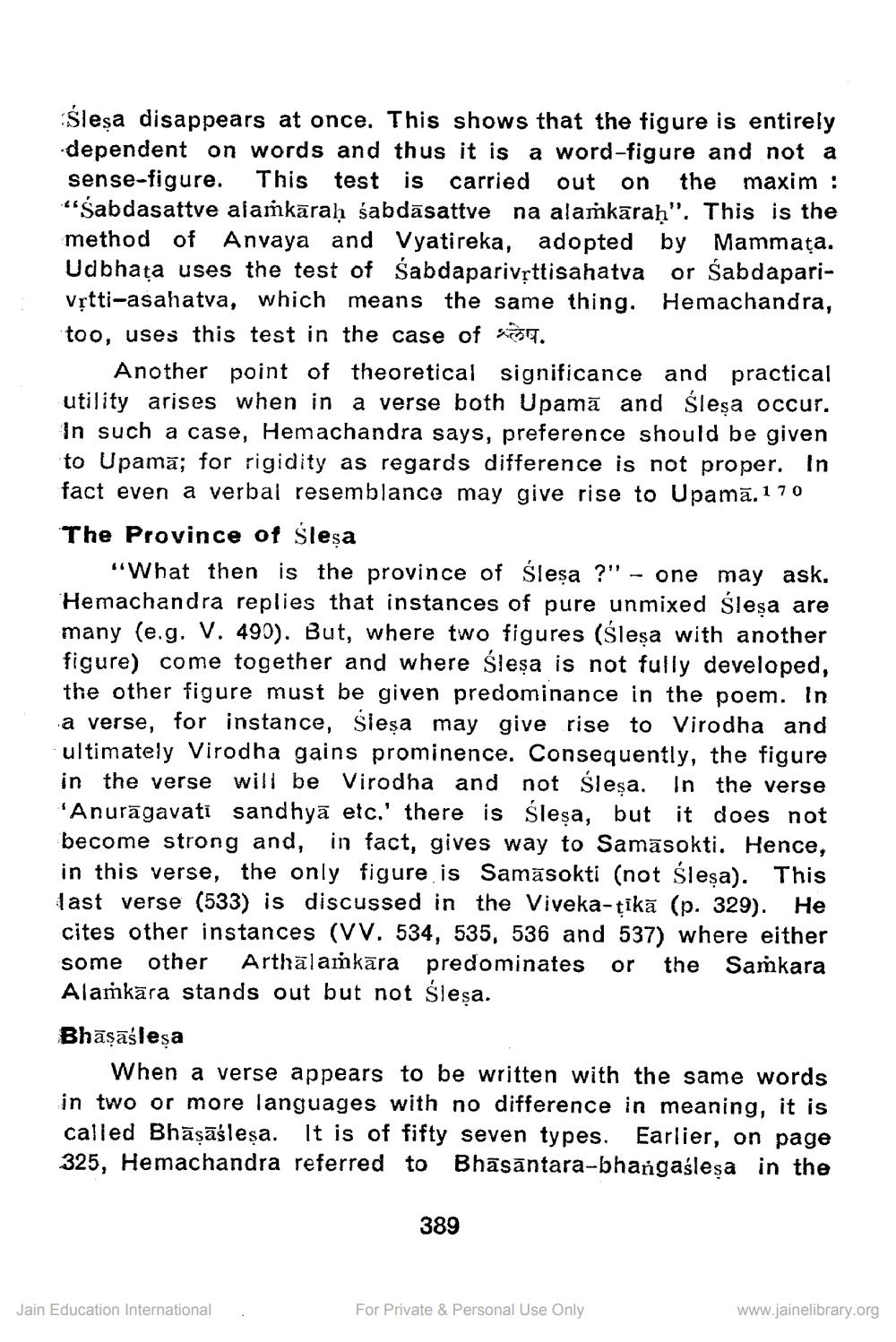________________
Ślesa disappears at once. This shows that the figure is entirely dependent on words and thus it is a word-figure and not a sense-figure. This test is carried out on the maxim : "Śabdasattve alamkārah sabdāsattve na alamkarah". This is the method of Anvaya and Vyatireka, adopted by Mammața. Udbhata uses the test of Sabdaparivșttisahatva or SabdapariVịtti-asahatva, which means the same thing. Hemachandra, too, uses this test in the case of xy.
Another point of theoretical significance and practical utility arises when in a verse both Upamā and Ślesa occur. In such a case, Hemachandra says, preference should be given to Upamā; for rigidity as regards difference is not proper. In fact even a verbal resemblance may give rise to Upamā.170 The Province of Slesa
"What then is the province of ślesa ?" - one may ask. Hemachandra replies that instances of pure unmixed Sleşa are many (e.g. V. 490). But, where two figures (Ślesa with another figure) come together and where Sleşa is not fully developed, the other figure must be given predominance in the poem. In a verse, for instance, Siesa may give rise to Virodha and ultimately Virodha gains prominence. Consequently, the figure in the verse will be virodha and not slesa. In the verse
Anurāgavati sandhyā etc. there is slesa, but it does not become strong and, in fact, gives way to Samāsokti. Hence, in this verse, the only figure is Samāsokti (not ślesa). This last verse (533) is discussed in the Viveka-ţikā (p. 329). He cites other instances (VV. 534, 535, 536 and 537) where either some other Arthālamkāra predominates or the Samkara Alamkāra stands out but not śleşa. Bhāṣāšlesa
When a verse appears to be written with the same words in two or more languages with no difference in meaning, it is called Bhāṣāśleșa. It is of fifty seven types. Earlier, on page 325, Hemachandra referred to Bhāsāntara-bhangaślesa in the
389
Jain Education International
For Private & Personal Use Only
www.jainelibrary.org




